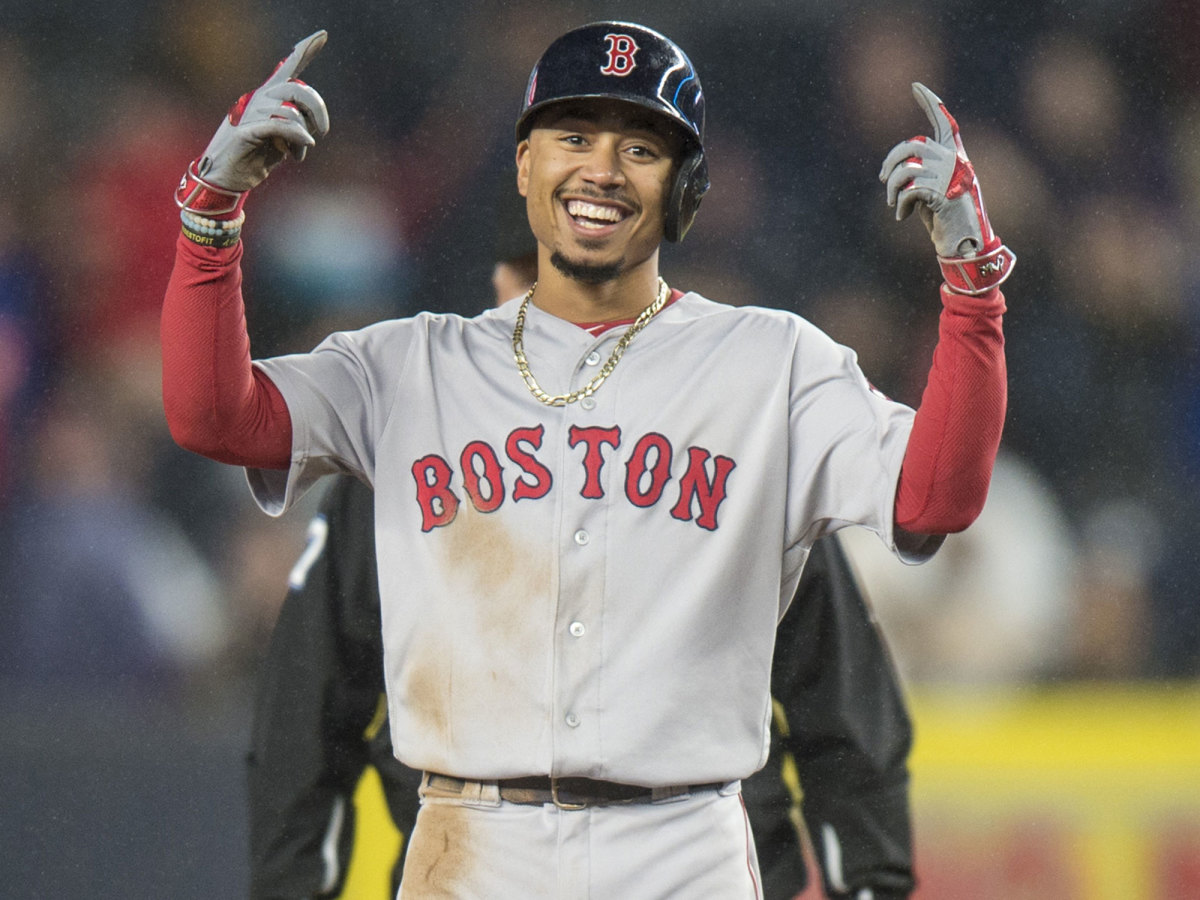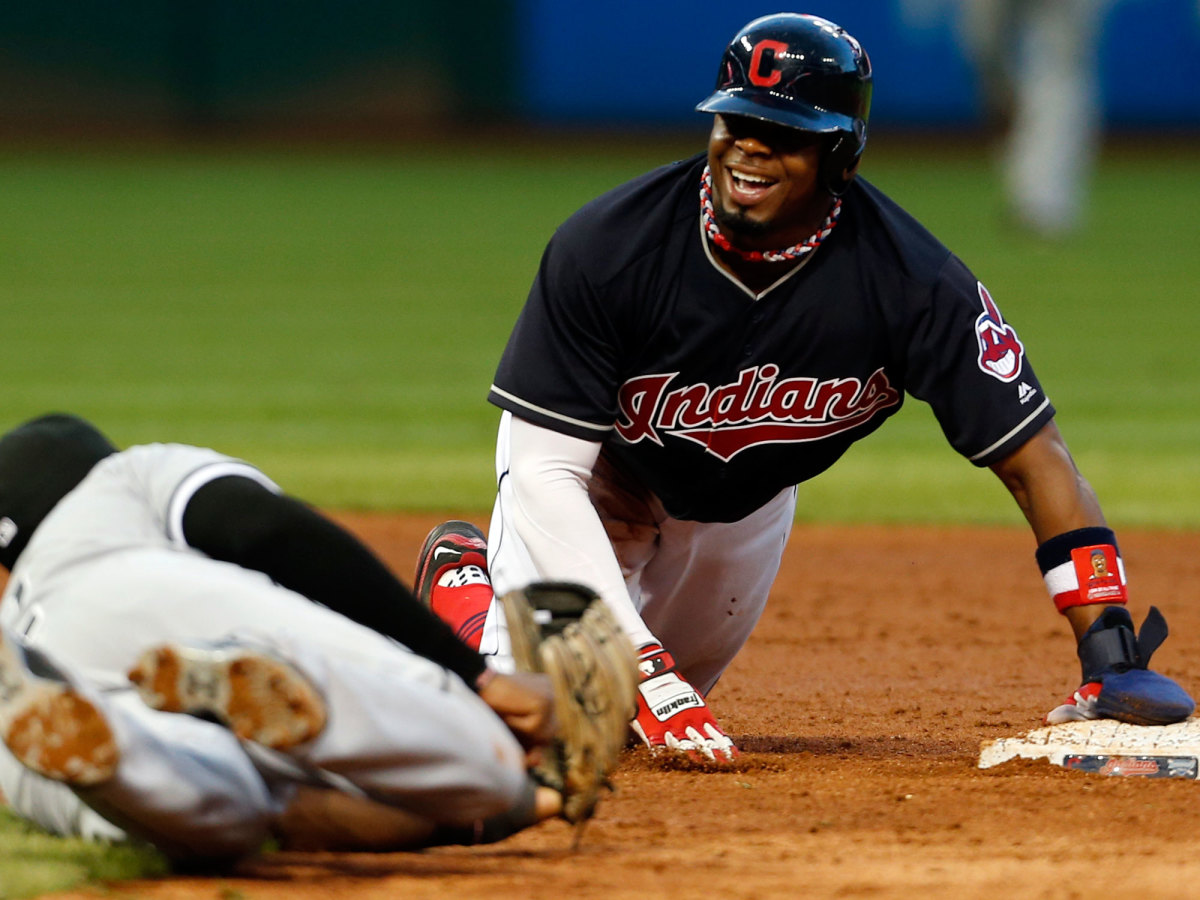ALDS Indians vs. Red Sox preview: Can Boston power its way past Cleveland?

The Red Sox and Indians last met in the playoffs in 2007, in an ALCS that saw Cleveland blow a 3–1 series lead and Boston capture the pennant en route to its second World Series in three seasons. This time around, the two teams will clash in the ALDS, as both division winners face off in a battle of well-rounded offenses. Who will come out on top?
Game 1: Thursday, Oct. 6 at Cleveland, 8 p.m. ET, TBS
Game 2: Friday, Oct. 7 at Cleveland, 4:30 p.m. ET, TBS
Game 3: Sunday, Oct. 9 at Boston, 4:00 p.m. ET, TBS
Game 4 (if necessary): Monday, Oct. 10 at Boston, TBD, TBS
Game 5 (if necessary): Wednesday, Oct. 132 at Cleveland, TBD, TBS
1. It’s Miller Time
The Indians’ pitching staff finished the season with an AL-high 122 ERA+, but Cleveland will start the postseason down two of its best arms: Carlos Carrasco, who is done for the year with a broken finger in his right hand; and Danny Salazar, who is out for at least the Division Series with a right forearm strain. On top of that, staff ace Corey Kluber missed his final start of the year with a quad strain, though both he and the team insist he is good to go against Boston. Nonetheless, Kluber’s injury has forced manager Terry Francona to go with the erratic Trevor Bauer as his Game 1 starter. Carrasco and Salazar, meanwhile, will be replaced by the homer-prone Josh Tomlin (a staggering 36 allowed in 174 innings) and hard-throwing yet control-challenged rookie Mike Clevinger.
With a combination of a potentially gimpy Kluber and three shaky starters behind him, you should expect to see Cleveland’s relievers early and often throughout the series. In particular, get ready to hear Andrew Miller’s name a lot. The lefty cost the Indians a fortune in prospects when they picked him up from the Yankees before the trade deadline, but he has been worth it, posting a 1.55 ERA, 46 strikeouts and just two walks in 29 innings with Cleveland. Miller’s nightmarish slider is the key to his success: Opposing hitters are batting just .167 on the pitch, and he’s gotten a swing-and-a-miss on it 25% of the time in 2016.
ALDS Rangers vs. Blue Jays preview: Expect another classic brawl in rematch
What makes Miller truly dangerous, however, is that Francona isn’t afraid to use him whenever and wherever he can. Miller has recorded four or more outs in nine of his 26 outings for the Indians, and Francona has deployed him anywhere from the seventh to the ninth depending on the game situation. Unbound by conventional bullpen usage rules—pour one out for Zach Britton, abandoned in the Orioles’ bullpen by Buck Showalter—Miller will be a constant throughout the series, much to the chagrin of the Red Sox hitters unlucky enough to face him.

2. Red Sox Sock
While Boston doesn't have a weapon like Miller in its bullpen, it does boast the best offense in baseball. On the season, the Red Sox led the majors in runs per game (5.42), batting average (.282), on-base percentage (.348), slugging percentage (.461) and OPS+ (110) and was top-10 in home runs (208). David Ortiz capped off his career with the greatest final season in MLB history, bashing 38 home runs and leading the team with a 162 OPS+. Dustin Pedroia rebounded from a down 2015 to hit .318 with 15 homers. Hanley Ramirez clubbed 30 homers in a bounceback from his awful Beantown debut season. Xander Bogaerts (21 homers) and Jackie Bradley Jr. (26) provided a youthful spark.
The standout season belonged to possible AL MVP Mookie Betts. Just 23 years old, the rightfielder bashed 31 homers, drove in 113 runs, stole 26 bases, posted an OPS+ of 131 and led the team in Wins Above Replacement with 9.6, the second-best mark in the majors behind Mike Trout’s 10.6. You can argue all you want that Trout, not Betts, deserves the end-of-season hardware, but there’s no doubting the impact Betts had in the middle of the order and on the bases for the Red Sox.
Murphy's Law: Five players who could be ready for a huge MLB postseason
There are few holes to exploit in Boston’s offense. The Red Sox battered lefties (.795 OPS against) as well as they did righties (.814). They hit power pitchers (.796 OPS) and they hit for power (an extra-base hit rate of 9.1%, tops in the AL). They didn’t strike out (a whiff rate of 18.4%, second best in the AL) and they were patient (a walk rate of 8.8%, third best in the AL). But Cleveland should benefit from having home field advantage, as the Sox were far better in the friendly confines of Fenway Park (.858 OPS) than on the road (.762), to say nothing of the Indians’ massive gap in production away from Progressive Field (.827 at home compared to.691 on the road).
What’s more, there are some soft spots in the Red Sox’ order, particularly in the bottom half. Third base was a problem all season, with rookie Travis Shaw coming apart after a terrific first half and losing his starting job to utilityman Brock Holt. At catcher, Sandy Leon got off to a scorching start (.391/.434/.620 through Aug. 1) but left a sizable crater in his fall back to earth (.263/.333/.394 in the final six weeks). Bogaerts and Bradley have slumped as well, hitting .253 and .234, respectively, since the All-Star break. Either Cleveland must find a way to tame the terrific top of Boston’s lineup, or the Red Sox must get more from their six-through-nine hitters.

3. Speed Kills?
The Indians’ offense wasn’t too far behind Boston’s in terms of production, albeit with less power and a few more strikeouts. Cleveland, too, has its share of problems in the lineup, particularly at catcher, where the team suffered through the terrible trio of Yan Gomes, Roberto Perez and Chris Gimenez. But one area where the Indians stand apart is their prowess on the base paths. Cleveland finished fourth in the majors with 134 steals, and its 81% success rate on stolen bases was second only to the Diamondbacks. Four Indians recorded 15 or more steals on the season, led by Rajai Davis (43), who remains impotent with the bat but a terror on the bases.
MLB postseason preview: Cubs not only team chasing history in 2016 playoffs
A lot of Cleveland’s postseason success will ride on the power hitting of Mike Napoli and Carlos Santana, the defense of shortstop Francisco Lindor and whether or not Jose Ramirez’s breakout 2016 can carry over through October. But the Indians can certainly tilt things in their favor by creating havoc on the base paths, led by Davis and Lindor—something that will likely feature a fair amount of small-ball and taking the extra base, two things at which Cleveland excels.
If there’s one team well suited to stop the Indians’ running game, however, it’s Boston, which had the fourth-best caught-stealing rate (61%) in the game on the season (Cleveland, interestingly enough, was third). Leon and backup catcher Christian Vazquez both possess strong arms and quick reaction times, and starters David Price and Rick Porcello are adept at disrupting would-be base stealers. Slowing down Cleveland on the bases will be paramount for the Red Sox.
